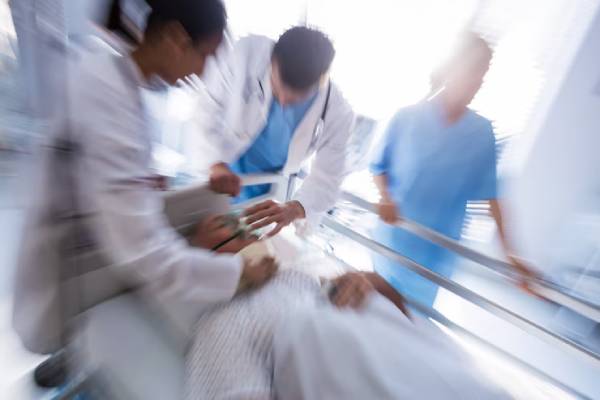The critical first hour after someone faces a trauma significantly impacts their survival rates. Quick medical intervention during this window can prevent complications, reduce permanent damage, and save lives that might otherwise be lost to severe injuries.
The Race Against Time
Those initial moments after a serious accident feel like chaos. The human body, suddenly subjected to tremendous forces, begins a complex cascade of responses to injury. Blood vessels constrict, hormones surge, and the heart races as it attempts to maintain circulation to vital organs. This physiological storm makes the first 60 minutes following trauma absolutely crucial. Medical professionals often refer to this period as the “golden hour” – a brief window where prompt intervention can dramatically alter the trajectory of recovery or even mean the difference between life and death. The concept, first introduced in military medicine during wartime, has since become a cornerstone of civilian emergency medicine, shaping how trauma systems worldwide organise their rapid response protocols.
Understanding Trauma’s Urgent Timeline
When patients arrive at a trauma hospital, every second counts. The specialised trauma teams understand that time-critical injuries deteriorate rapidly without intervention. Massive internal bleeding can cause irreversible shock within minutes. Oxygen deprivation to the brain may cause permanent damage after just four minutes. What makes trauma care uniquely challenging is how quickly small problems cascade into catastrophic ones. The body’s reserves deplete, compensatory mechanisms fail, and cellular damage accelerates exponentially as the golden hour slips away.
Specialised Care for Critical Injuries
The brain doctor in Ranchi plays a vital role in trauma cases involving head injuries. Neurological trauma requires particularly swift assessment and treatment, as the brain’s delicate tissues have limited tolerance for injury. Evidence suggests that patients receiving specialised neurological care within the golden hour have significantly improved outcomes. Modern trauma protocols emphasise rapid neurological assessment, immediate imaging, and early intervention when brain injuries are suspected. This approach has revolutionised survival rates for what were once considered catastrophic head injuries.
Modern Trauma Systems: Coordinated Response
Advanced trauma care systems operate like well-rehearsed orchestras. From the moment emergency services arrive on scene, a sophisticated chain of communication begins. Paramedics perform critical assessments, stabilise immediate threats to life, and alert hospitals of incoming patients. This pre-hospital phase represents a crucial component of the golden hour. Teams waiting at the hospital prepare specific resources based on the reported injuries, ensuring no time is wasted upon arrival. The trauma bay stands ready with equipment, medications, and specialists positioned for immediate action.
Technology in Trauma Care
Technological advancements have expanded what’s possible within the golden hour. Portable ultrasound devices allow detection of internal bleeding at the accident scene. Blood warming systems enable rapid transfusion without dangerous hypothermia. Specialised trauma centres often feature hybrid operating theatres where imaging and surgery occur simultaneously. Each innovation shaves precious minutes from the response timeline. These technologies, combined with evidence-based protocols, have transformed once-fatal injuries into survivable events when treatment occurs within that critical first hour. Recent innovations in trauma care include AI-assisted triage systems that help predict injury severity from vital signs and mechanism of injury, allowing more precise resource allocation even before the patient arrives.
The Role of Public Awareness
While medical systems continue to improve the response time during a trauma, public education remains equally important. Bystanders who recognise serious injuries and activate emergency services quickly contribute significantly to preserving the golden hour. Simple interventions like proper application of pressure to bleeding wounds, recovery positions for unconscious patients, and recognition of danger signs can bridge crucial minutes until professional help arrives. Community-level awareness essentially extends the reach of trauma systems, allowing professional care to begin sooner through early recognition and response. The widespread availability of mobile phones has revolutionised this aspect of trauma care, enabling immediate access to emergency services and even providing video-guided assistance for critical first aid measures when every second counts.
The Psychological Element of Trauma
The psychological impact of severe trauma begins immediately alongside physical injury. Acute stress responses affect both patients and witnesses, potentially complicating treatment efforts. Medical teams trained in trauma-informed care understand that addressing psychological needs during the golden hour can improve cooperation with life-saving procedures. Trauma specialists increasingly recognise that early psychological support influences long-term mental health outcomes, much as rapid physical intervention affects physical recovery. Family presence protocols, clear communication techniques, and pain management strategies all address this crucial dimension of comprehensive trauma care.
The golden hour represents one of medicine’s most time-sensitive challenges. Those first sixty minutes following serious injury offer a narrow window where swift, coordinated care can dramatically alter outcomes. Anyone experiencing or witnessing significant trauma should seek emergency medical attention immediately – don’t wait to see if symptoms improve. Understanding the importance of rapid response could one day save a life. For more information about trauma prevention and emergency preparedness, speak with healthcare providers or attend a community first aid course.
Featured Image Source: https://img.freepik.com/free-photo/team-doctors-putting-oxygen-mask-male-senior-patient-face_107420-63866.jpg
